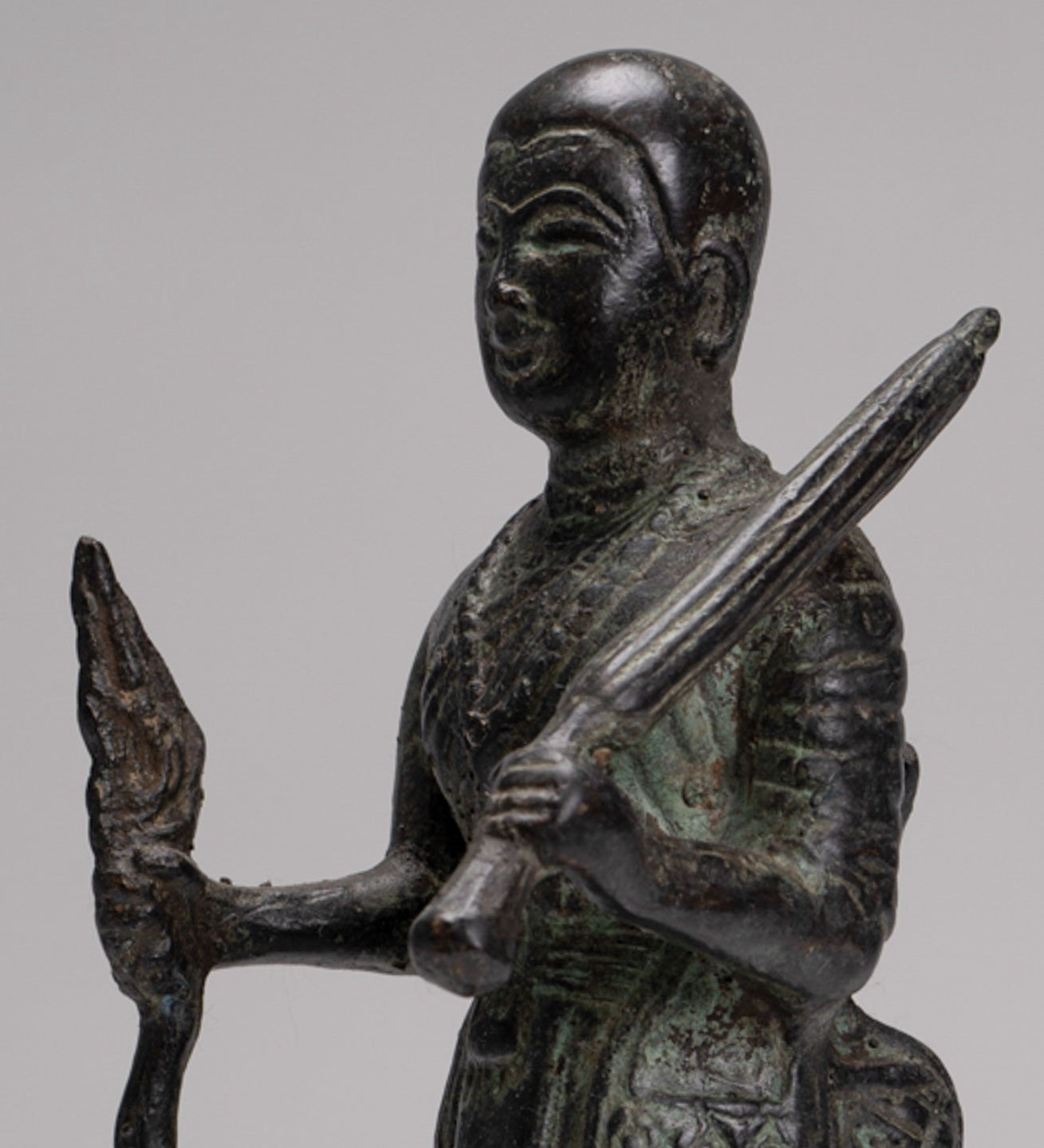
The Three Jewels of Buddhism: The Foundation of Buddhist Practice
Introduction
In Buddhism, the Three Jewels, also known as the Three Refuges, are the cornerstone of the Buddhist faith and practice. These three elements—the Buddha, the Dharma, and the Sangha—serve as guiding principles for Buddhists around the world, providing a framework for understanding, living, and cultivating the path to enlightenment.
By taking refuge in these three jewels, Buddhists commit themselves to the teachings and practices that lead to liberation from suffering.
This blog post delves into the significance, meaning, and practical applications of the Three Jewels in the life of a Buddhist practitioner.
The First Jewel: The Buddha
Who is the Buddha?
The term "Buddha" means "The Enlightened One" or "The Awakened One." Siddhartha Gautama, who lived in the 6th to 5th century BCE, is recognized as the historical Buddha. After years of ascetic practice and meditation, he attained enlightenment under the Bodhi tree in Bodh Gaya, India. His realization of the true nature of existence, suffering, and the path to liberation forms the foundation of Buddhism.
Significance of the Buddha
Taking refuge in the Buddha means recognizing the Buddha as a teacher and a role model. It signifies faith in his enlightenment and an aspiration to follow his path. The Buddha represents the potential for awakening within all beings. His life and teachings offer a practical example of how to live a life of compassion, wisdom, and ethical conduct.
Practical Application
In daily practice, Buddhists may meditate on the qualities of the Buddha, study his teachings, and emulate his actions. Statues and images of the Buddha serve as reminders of his qualities and the possibility of attaining enlightenment. Chanting and reciting verses that honor the Buddha are also common practices.
The Second Jewel: The Dharma
What is the Dharma?
The Dharma refers to the teachings of the Buddha, encompassing his sermons, discourses, and ethical guidelines. It is the universal truth that the Buddha realized and shared with others. The Dharma is not only a set of doctrines but also the path to spiritual awakening.
Significance of the Dharma
Taking refuge in the Dharma means committing to the study and practice of the Buddha's teachings. It involves understanding the Four Noble Truths, the Noble Eightfold Path, and other key doctrines. The Dharma provides a blueprint for ethical living, mental cultivation, and wisdom.
Practical Application
Practicing the Dharma involves studying Buddhist scriptures, engaging in meditation, and applying ethical principles in daily life. Mindfulness and meditation practices are essential components of Dharma practice, helping individuals cultivate insight, compassion, and mental clarity. The Dharma encourages continuous learning and reflection, guiding practitioners on their journey towards enlightenment.
The Third Jewel: The Sangha
What is the Sangha?
The Sangha refers to the community of Buddhist practitioners. Traditionally, it includes the monastic community of monks and nuns who have dedicated their lives to practicing and preserving the Dharma. In a broader sense, the Sangha encompasses all individuals, lay and ordained, who follow the Buddha's teachings.
Significance of the Sangha
Taking refuge in the Sangha means recognizing the importance of a supportive community in one's spiritual journey. The Sangha provides guidance, inspiration, and a sense of belonging. It serves as a source of wisdom, ethical guidance, and encouragement, helping individuals stay committed to their practice.
Practical Application
Engaging with the Sangha can involve participating in local Buddhist groups, attending meditation retreats, and seeking guidance from teachers. The Sangha offers opportunities for communal practice, study, and service. Being part of a Sangha helps individuals develop a sense of accountability and mutual support, fostering a deeper commitment to the path of awakening.
The Importance of Taking Refuge
Symbolic and Practical Commitment
Taking refuge in the Three Jewels is a formal expression of one's commitment to the Buddhist path. It is often marked by a ceremonial act in which one recites the refuge formula: "I take refuge in the Buddha, I take refuge in the Dharma, I take refuge in the Sangha." This act symbolizes a deep commitment to spiritual growth and ethical living.
Foundation for Practice
The Three Jewels provide a foundation for all Buddhist practices. They serve as guiding lights, offering wisdom, ethical direction, and communal support. By taking refuge, practitioners align themselves with the principles and practices that lead to liberation from suffering and the attainment of enlightenment.
The Three Jewels in Daily Life
Integrating the Jewels
Integrating the Three Jewels into daily life involves a continuous process of learning, reflection, and practice. This can include setting aside time for meditation, studying Buddhist teachings, and engaging in acts of kindness and generosity. By embodying the qualities of the Buddha, adhering to the teachings of the Dharma, and participating in the Sangha, individuals cultivate a life of mindfulness, compassion, and wisdom.
Challenges and Opportunities
Living in accordance with the Three Jewels can present challenges, especially in a world that often prioritizes materialism and self-interest. However, these challenges also present opportunities for growth and transformation. By staying committed to the Three Jewels, practitioners can navigate life's difficulties with greater resilience and equanimity.
Conclusion
The Three Jewels—The Buddha, the Dharma, and the Sangha—are the heart of Buddhist practice. They offer a comprehensive and profound path to understanding, living, and achieving spiritual liberation.
By taking refuge in these three treasures, Buddhists commit to a journey of ethical living, mental cultivation, and wisdom.
Whether through meditation, study, or communal engagement, the Three Jewels provide a guiding framework for a life of mindfulness, compassion, and inner peace.
Embracing the Three Jewels can transform one's life, leading to deeper understanding, fulfillment, and the ultimate goal of enlightenment.


























